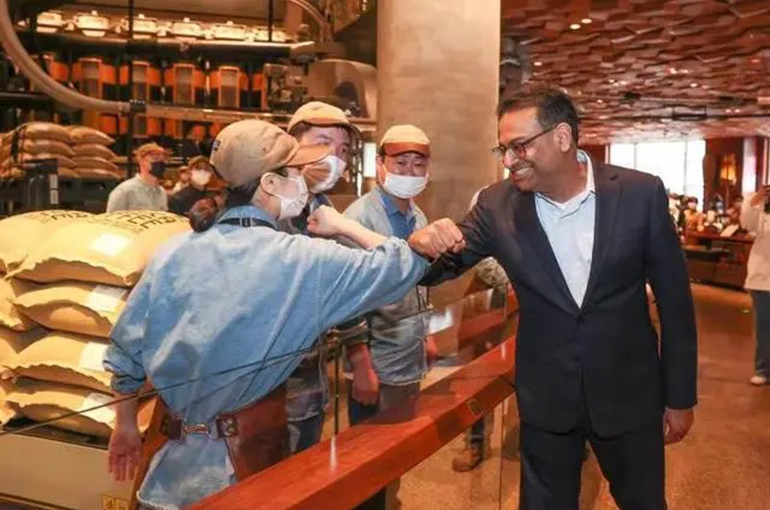 Starbucks to Have 9,000 Stores, 90,000 Workers in China by 2025, CEO Says
Starbucks to Have 9,000 Stores, 90,000 Workers in China by 2025, CEO Says(Yicai Global) May 31 -- Starbucks China aims to have 9,000 outlets in the country and raise its employee headcount to more than 90,000 from 60,000 by 2025, according to the US coffee chain’s chief executive officer.
“9,000 stores is just a milestone, and we will not stop there,” Laxman Narasimhan said in an interview during his first visit to Shanghai yesterday.
Starbucks’ market capacity in China is expanding, with the number of customers also increasing, Narasimhan said. The market has huge potential as locals consume on average only 12 cups of coffee a year, way less than the hundreds of cups per head in developed countries, he noted.
Starbucks opened its first store in the Chinese mainland in 1999 and had more than 6,200 outlets across 244 cities as of April 2. The Seattle-based firm also targets China's more than 300 prefecture-level cities and nearly 3,000 counties, and unlike other coffeehouse chains, it has no plans to open franchised stores for quick expansion.
“The Chinese market is too important, and we hope China becomes Starbuck's biggest market worldwide,” Narasimhan said.
New coffee brands have been appearing in China and have had frequent fundraisers in recent years, even if the local market is vast. Some 18,000 firms related to the coffee industry registered in China in the first four months of this year, up 103 percent from a year earlier, data from business information platform Qichacha showed. New registrations in February surged 183 percent to 3,470.
“This is an enormous market with a very big market space. We welcome competition, as it can expand the coffee consumption market," Narasimhan added. "I have been paying attention to the things we can control, including products, experience, store design, plants, supply chain, and digitization, and we will have many local innovations later.”
The ability to control costs is Starbuck’s biggest advantage when expanding in smaller cities and counties, according to Zhu Danpeng, an analyst of China's food industry. "It is an advantage of many chain brands,” he added.
For example, chain brands price a beverage at CNY30 (USD4.22) a cup in first- and fifth-tier cities, but there is likely a big gap in store rents between the two tiers, Zhu pointed out. “So even if revenue may be relatively low for each store in lower-tier markets, chain brands still have a huge overall cost advantage,” he said.
Editors: Liao Shumin, Martin Kadiev